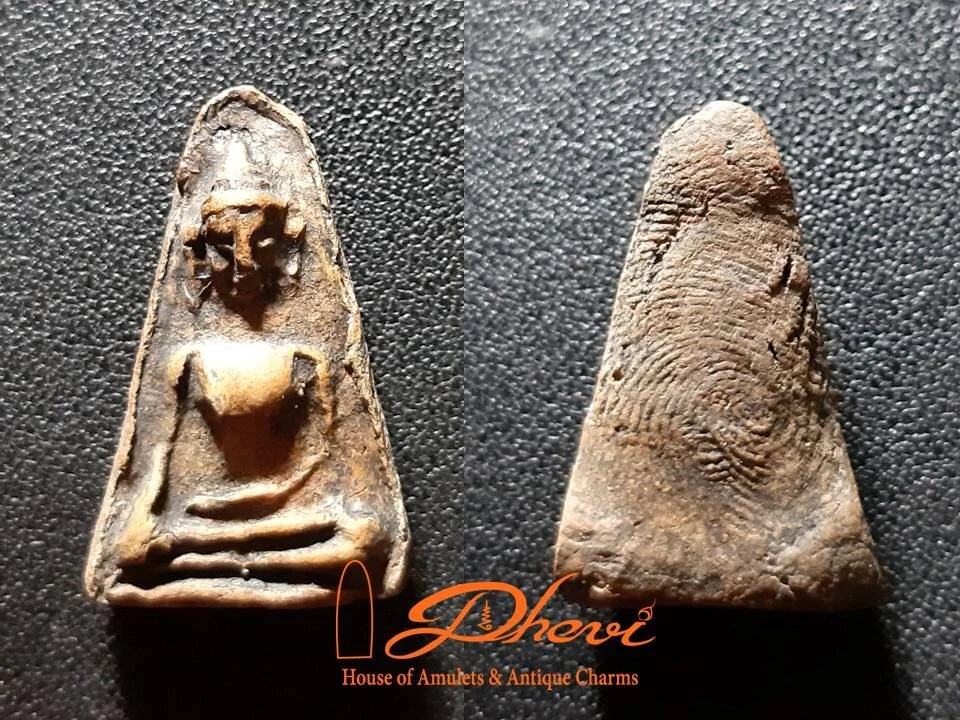U-Thong Period (B.E. 1700 – 2000 , A.D. 1157 -1457) Ayothaya Kingdom
U-Thong has been proved the oldest city with evidence in ecology and archaeology that it has aged 2000 years from B.E. 500 where it situated on the dune of fluvial deposit. There, U-Thong leaders tried to solve the waterway problem but unfortunately failed to do so causing the eventual decline of U-Thong from a bustling city to a small community giving rise to Supanburi to become a major and influential city from B.E. 1600 (A.D. 1057).
King U-Thong or King Ramathibodi I (1857 -1876 B.E. , A.D. 1350 – 1369) was the first King of Ayothaya ,the predecessor to the famous Ayutthaya Kingdom. He was thought to have been a descendant of Mangrai. He established his own capital in the new city of Ayutthaya, his domain included Korat, Chantaburi, Tavoy, Tenasserim, and a large part of Malaya.
U-Thong art flourished in Central Thailand between the 12th – 15th Century A.D. during a time when Khemer influence was waning before and during the early stages of the Ayothaya Kingdom. As such U-Thong style was influenced by both previous and contemporary styles in the region. According to a better known sources, King U-Thong (Ramathibodi I) was an ethnic Chinese, having sailed down from China. After finding success in mercantile trade, he became influential enough to rule the city of Petchburi before traveling up to Ayothaya. King Ramathibodi’s death left a power vacuum and sparked a succession conflict. Initially his son, King Ramaesuan became ruler of Ayothya.
Knowledge about the amulets of the U-Thong Period:
The main amulet which is believed to have been made in the U-Thong Period is the Phra Pong Supan, which is ranked as one of the Top 5 Amulets. Phra Pong Supan has the artful characteristics of the U-Thong Period, and was made of holy clay as it’s main material. This fine grained clay was infused with herbal liquids, while other herbs and flowers were ground into a powder which together were blended into a special mix that caused these clay amulets to dry particularly hard creating a smooth and shiny surface.
Phra Pong Supan Amulets were first found at the main “Prang” or Pagoda of Wat Phra Srirattana Mahatal in Supanburi by Chinese immigrants who were trying to farm vegetables around the Prang, when they encountered a number of sunken earth holes with amulets of various sizes and varieties including the Phra Pong Supan.
Later, in the year B.E. 2456 (A.D. 1913) the Supanburi ruler presented most of the amulets found there to King Mongkut, whom in return distributed them to his officers and followers. Phra Pong Supan also was said to have been made by 4 Hermit Gurus who composed the materials and minerals for the mix, then pressed to the mold by finger leaving finger prints behind on the back side of the amulets. The Amulets where bake in a kiln result them to have different colors from light tan, brown, gray, and some rare black, depending on the heating period and their position in the kiln.
Phra Pong Supan Amulets
are believed to bestow the virtue upon worship for withstanding danger and harm, success in all works and particularly in sales, being respected and gaining power for leadership.


